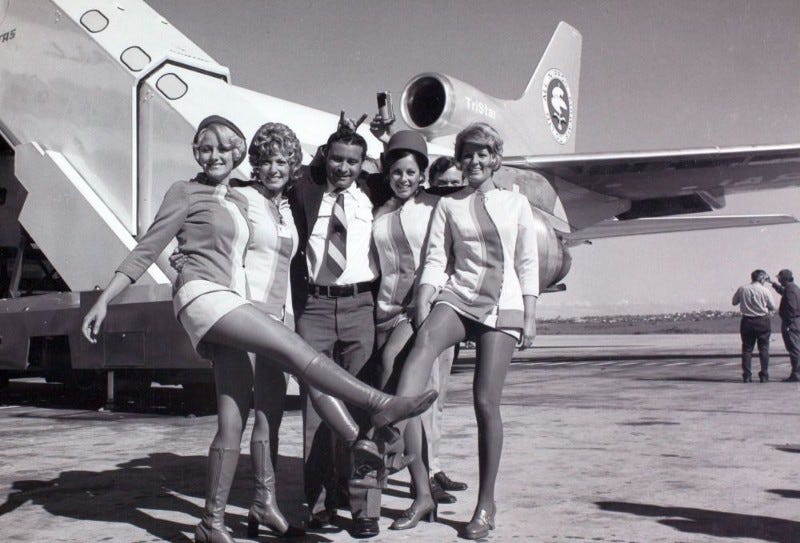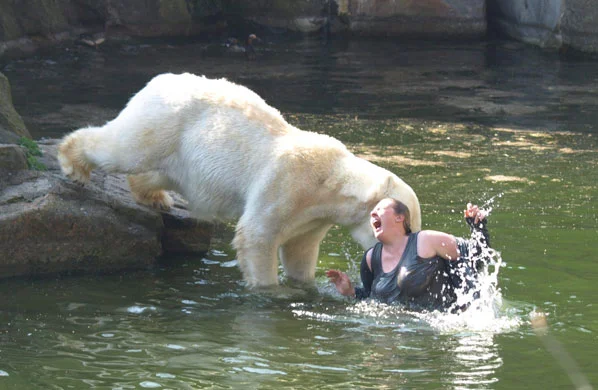In 1972, the aviation world was drastically different from today. Aboard a Southwest Airlines flight, passengers experienced service that was not just about traveling from one point to another but was an event of its own. Among the stars of the sky were the stewardesses, young, vibrant women who donned stylish uniforms and smiles, ready to transform any regular flight into a memorable journey. One such stewardess was Marie Davidson, a 24-year-old with an adventurous spirit and a passion for people that made her an iconic figure in the aisles of Southwest Airlines.
Marie’s day started early at Love Field in Dallas, Texas, where Southwest Airlines, then a fledgling carrier, operated its bustling hub. With only a few aircraft in its fleet, each flight meant an opportunity for the stewardesses to prove their worth and for Southwest to carve its niche in the competitive airline industry. Clad in a form-fitting white dress that echoed the fashion sensibilities of the time, complete with knee-high boots, Marie’s uniform was not just about looks—it was designed for functionality and comfort, a necessity when zipping up and down the narrow aisles of a Boeing 737.
A typical flight schedule included several short hops between Dallas, Houston, and San Antonio—cities that formed the so-called “Texas Triangle.” Marie and her colleagues were tasked with not only ensuring safety but also providing an exceptional level of customer service. At a time when air travel was still a luxury, the charm and attentiveness of stewardesses like Marie made all the difference. They served meals on real china, poured drinks from full-size bottles, and always had time to share a laugh or lend an ear.
On one memorable flight, Marie dealt with a passenger, a nervous first-timer, with such grace and reassurance that by the end of the journey, he had not only calmed down but was also sharing jokes with his fellow travelers. This ability to connect with passengers from all walks of life and transform their flying experience was what made Marie so valued by Southwest.
Behind the scenes, the job wasn’t always glamorous. The long hours, the need to always be “on,” and the physical demands of the job took a toll. Yet, Marie found joy in the camaraderie shared among her crew members. They were a tight-knit group, supporting each other through every early morning call time and every delayed flight. This sense of family was fostered by Southwest’s leadership, who knew every stewardess by name and often worked alongside them on flights to better understand their needs and challenges.

1972 was also a significant year for Southwest Airlines as it faced intense legal battles and competition from bigger airlines that tried to squeeze it out of the market. Marie, like many of her colleagues, was often involved in promotional events and public appearances, championing the airline’s low-cost, high-frequency service model. Her friendly face and positive testimonials helped Southwest gain public sympathy and support during these tumultuous times.
As the day wound down, Marie’s final flight would bring her back to Dallas. The setting sun through the airplane windows offered a moment of reflection. For Marie, this job was more than a career; it was a gateway to the world and a platform to connect with diverse people, proving that stewardesses were essential to the airline’s soul and operations.
Looking back through the lens of history, Marie’s story is a vivid chapter in the golden era of aviation, marked by a personal touch that has since evolved in the face of modern demands and technological advancements. Stewardesses like her laid the groundwork for the modern flight attendant, but more importantly, they helped define an era where flying was as much about the journey as the destination.


